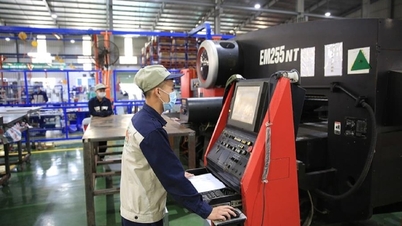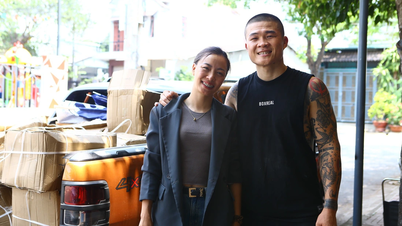 |
AI is giving workers headaches at work. Photo: Visier . |
In today’s labor market, AI skills have become almost essential to increase productivity and stay competitive. Many managers expect employees to be able to use AI in their daily work, and are starting to include this element in job descriptions.
On the other hand, the adoption of technology is not instantaneous. With the market uncertainty and mass layoffs, workers feel more pressure to integrate AI into their lives. Some say it feels like taking on a second job.
Pressure not to fall behind
In recent years, AI proficiency has become one of the important, almost essential skills in the market. In the Future of Jobs (2025) report of the World Economic Organization, AI and Big data are the two skills that are predicted to increase sharply in the next 5 years, followed by cybersecurity.
Many job postings for tech employees today require these skills. Even non-specialized fields like marketing and PR sometimes require candidates to know AI to optimize work processes.
According to a survey by Microsoft & LinkedIn (2024), 75% of workers feel pressured to learn AI to avoid falling behind. However, there are currently not many reputable training centers and experts in the field, making learning AI inconvenient and difficult.
 |
| Workers are under pressure not to be left behind in the AI era. Photo: Hcamag. |
To keep herself updated, Ms. Mai Hoa (25 years old, Ho Chi Minh City) has to follow any media related to this technology, from social networking groups, courses, to signing up for weekly electronic newsletters. “Every day I have to come into contact with many articles and emails reporting on AI, but I still feel it is not enough,” she shared.
The fear of missing out (FOMO) is growing as AI fails to reduce workloads as promised. In fact, ad hoc chatbots will not only speed up the process, but also add to the workload of users.
A Danish study of 25,000 workers found that chatbot use was widespread, but there was almost no change in hours worked or wages. AI saved 2.8% of working time, or an hour a week, but created 8.4% of new jobs.
Chatbots can help sketch out initial ideas and synthesize information from multiple sources, but humans also spend time checking for accuracy, correcting errors, and rewriting better commands. For example, lecturers today spend hours grading student papers, or graphic designers have to fine-tune errors from AI-generated images.
Learning AI as a second job
In addition to increased workloads due to AI, employees are facing the situation of taking on 2-3 additional tasks due to cuts. Stanford research shows that AI also replaces some of the current number of jobs, especially jobs that require minimal experience.
As a result, while some worry about not being able to keep up with technological advances, others are having to do many times more work than before. This rapid change is affecting the health and working conditions of workers.
According to a LinkedIn survey of 7,000 office workers, 51% compared learning AI to taking on another job. Posts about feeling overwhelmed and struggling to adapt to change have increased 82% this year.
Pressure to develop AI skills is fueling workplace insecurity, with 33% of people feeling embarrassed about how little they know and nervous about talking about AI at work, according to a survey.
The model shows that users are gradually becoming disillusioned with GenAI. Photo: Gartner. |
Recently, Google searches for keywords such as AI burnout, second jobs, and making money from AI have increased simultaneously. However, according to Gartner's model describing the expectation cycle of AI technologies (updated June 2025), generative AI products that are widely used are in the lowest expectation zone.
The model shows that AI technologies that truly create value, such as cloud computing, or tools with hyped potential, such as AI agents and artificial general intelligence (AGI), while the commonly used genAIs are falling into the abyss of disappointment due to problems with cost, efficiency, and widespread AI garbage.
Additionally, each time a chatbot is used, a person loses a thinking opportunity, which over time will leave behind a “cognitive debt.” MIT research shows that people who use ChatGPT have less active brain cells, and their dependence on AI worsens.
Therefore, burnout is not only about the command or the tool, users also have to balance their ego and mindset when using it. In an era where one person can do many jobs at the same time, how to use AI to optimize time and not lose yourself among other candidates is becoming a difficult problem for workers.
Source: https://znews.vn/kiet-suc-vi-ai-post1604106.html









































































































Comment (0)